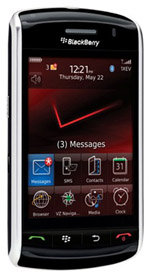
Technology today is seeing amazing heights, and Apple is at the top of those heights, with the creation of iTunes, the iPod, Mac book and now the iPhone. The 3gS iPhone is one of the most innovative pieces of technology of our time, with the ability to read maps, make movies, edit photos and movies, and voice recognition. With touch screen functionality you can navigate with just a touch of a finger between applications, pictures, messages, and phone numbers. The iPhone has become even more affordable with a price of $199 with a two year contract from AT&T.
The easy to recognize face that is identical to the original iPhone with the exception of the bright, high quality, high resolution 480 x 320 3.5-inch display is easy to hold in your hand with the slightly curved back. However they haven’t found a way to cut down on smudges and fingerprints, But alas, the smudge loving plastic cover is needed now that the iPhone has so many technologies like GSM, EDGE, HSDPA, Wi-Fi, Bluetooth, and GPS. One of the down sides to the new body shape is it will not fit in the original iPhone docking station, and it is sold separately for about $30.00.
The Apple 3G S iPhone has improved on the call quality that may not be noticeable when you upgrade but in a side by side comparison there was an obvious difference. Apple has also had to lengthen the life of the battery because 3g does require more power, not to mention the support of all the cool new applications and music, video and pictures. If you are in an area where 3G isn’t a necessity you can dig down into the menu and turn that feature off.
You’ll notice that the camera is the same as on the original iPhone although images were a little crisper and sharper. The camera will now ask permission to use GPS to geotag photos with your current location. Geotags allow you to have an image tagged to a map position so you can have landmarks to refer to and make maps a little friendlier.
Outside of the cool features I think it is important to mention a few pros and cons of the programs.
- Power Point documents can now be seen on the new iPhone but to save any files you still have to email them to yourself.
- If you sync MobileMe calandars your calendar subscriptions like iCal or Gcal will be disabled
- However, even though the full Exchange Suite is not available the core elements work really well, like email, calendar and contacts. Unfortunately, enterprise contacts and calendars coexist on the same device with personal contacts and calendars.
Over all the new 3GS iPhone has all the bells and whistles any tech loving on the go person could want and outside of renting laptops for business trips it really can keep you in touch with your office and fits nicely in your pocket. However, if you are going to pay around $170.00 a month in cell services I do advise doing your homework as some of the application conflicts just might be a deal breaker.
 On a recent vacation to Put-In-Bay, Ohio, a small town on South Bass Island in the south west of Lake Erie, I was pressed to find a solution that would allow me to stay connected to my office while still being 250 miles away. I, of course, always use remote desktop for working in the evenings and on other trips I’ve taken, the problem with this vacation was the location. It wasn’t exactly in a metropolis where WiFi connections are abundant. The solution was tethered internet access through my BlackBerry Storm.
On a recent vacation to Put-In-Bay, Ohio, a small town on South Bass Island in the south west of Lake Erie, I was pressed to find a solution that would allow me to stay connected to my office while still being 250 miles away. I, of course, always use remote desktop for working in the evenings and on other trips I’ve taken, the problem with this vacation was the location. It wasn’t exactly in a metropolis where WiFi connections are abundant. The solution was tethered internet access through my BlackBerry Storm.